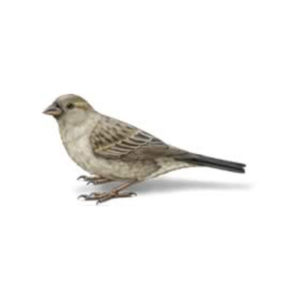House Finches in Central and Eastern Virginia
House finches breed between March and August. A breeding pair may have as many as six clutches of eggs in one summer, but usually only have three. Females build a shallow, cup-shaped nest in shrubs, eaves, tree cavities, buildings, hanging plants, and tree branches. Both parents tend to the young which will leave the nest in 12-19 days. The male continues to feed the fledglings for two weeks while the female builds a new nest and begins raising the next brood. After they become independent, young house finches form large flocks that will be able to breed the following spring.
House Finch Habitat
House finches live near settled habitats, such as city parks, urban centers, residential backyards, farms, and forest edges. Outgoing and social, house finches are found in noisy groups that are hard to miss if present. They can be seen feeding on the ground or at bird feeders or perching high in nearby trees.
House Finch Behaviors, Threats, or Dangers
House finches prefer to live outdoors but are known to build nests in chimneys, attics, garages, and dryer vents which offer exceptional conditions for nesting. These birds love seeds and fruit and when foraging for food, they can cause significant damage to fruit trees and shrubs in your yard. They also can create quite a mess in the form of droppings and nesting debris scattered on your property. Most house finch damage is the result of their food-seeking behaviors as they peck at ripening fruit and eat the seeds of various plants. They also love to eat budding blossoms and flowers which can be quite frustrating to gardeners.
House finches are protected by the Federal Migratory Bird Treaty Act as migratory, non-game birds. Prevention and exclusion are the primary actions homeowners can take to deter house finches from nesting on their property.
Need help with House Finches?
Get started with a FREE quote!





